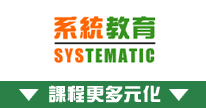課程名稱:MCSE: Productivity 國際認可證書課程 (只教 1 科 Exchange Server 2016)
- 簡稱:MCSE Exchange Training Course (2016) |
Exam 070-345 Designing and Deploying Microsoft Exchange Server 2016 (54 hours)
1. Introduction to Microsoft Exchange Server 2016
1.1 Benefits in using Exchange as your Messaging System
1.2 New Features in Client side of Exchange Server 2016
1.3 Exchange 2016 Product Offerings and Licensing
2. Deploying Exchange Server 2016 Organization
2.1 General Requirement of Exchange Server 2016
2.2 Typical Installation of Exchange Server 2016
2.3 Windows Domain Environment
2.4 Configuring the domain network environment for deploying Exchange Server 2016
2.5 Installation of Exchange Server 2016 in a Forest with Multiple Domains and Coexistence with Previous Versions of Exchange Server
2.6 Exchange Server 2016 Un-attended installation
2.7 About Exchange Admin Center
2.8 Supported Browsers for Exchange Server 2016 EAC
2.9 Update Model for Exchange Server 2016
3. Managing and Using Mailbox
3.1 Enabling / Disabling Mailbox for Users
3.2 Sending and Retrieving Mail with Outlook
3.3 User’s Information
3.4 Email Addresses
3.5 Mailbox Features
3.6 Mail Flow Settings
3.7 Mailbox Settings
4. Messaging Records Management
4.1 Reasons of using Messaging Records Management in Exchange Server 2016
4.2 Explaining the MRM Strategy and Process
4.3 Outlook E-mail Rules
4.4 Mailbox Permission
4.5 Exporting and Importing User Mailbox data
5. Other Recipient Objects
5.1 Resource Mailbox
5.2 Mail-enabled Users
5.3 Mail-enabled Groups
5.4 Mail-enabled Contacts
6. Address List
6.1 Address List created by default
6.2 Custom Address Lists
6.3 Offline Address Book (OAB)
6.4 Address Book Policy
7. Mailbox Database
7.1 Creating a New Mailbox Database
7.2 Moving a User Mailbox to another Mailbox Database using EMC
7.3 Moving a User Mailbox to another Mailbox Database at Scheduled Time using cmdlet
7.4 Mailbox Database’s Journal Recipient
7.5 Other Mailbox Database Settings
8. Understanding Transactions in Exchange Server
8.1 Transaction Log
8.2 Creating a New Mailbox Database with Transaction Logs
8.3 Transaction Files and Database Files Path
9. Public Folder
9.1 Creating a Public Folder Mailbox
9.2 Properties in Public Folder Mailbox
9.3 Creating a Public Folder
9.4 Assigning Permission for a Public Folder through Cmdlet
9.5 Assigning Permission for a Public Folder through Outlook
9.6 Mail-Enabling a Public Folder
10. Backup, Restore and Disaster Recovery
10.1 Supported Backup Technologies and Backup Types
10.2 Online Backup Methods
10.3 Windows Files and System State Data Backup
10.4 Performing Backup
10.5 Restoring a Mailbox Database from backup media
10.6 Recovery Database
10.7 Recovering Mailbox
10.8 Repairing Databases
11. Working with Internet
11.1 Mail Related Protocol
11.2 Outlook Web App (OWA)
11.3 POP3 and IMAP Access
11.4 SMTP
11.5 Multiple Internet Domains
11.6 Outlook Anywhere
12. Server Roles
12.1 Mailbox Role
12.2 More about Transport services
12.3 Client Access Services
12.4 Edge Transport Role
Supplement I: Designing and Deploying Highly Available Mailbox Server
Supplement II: Designing and Deploying Highly Available Client Access Services
|
